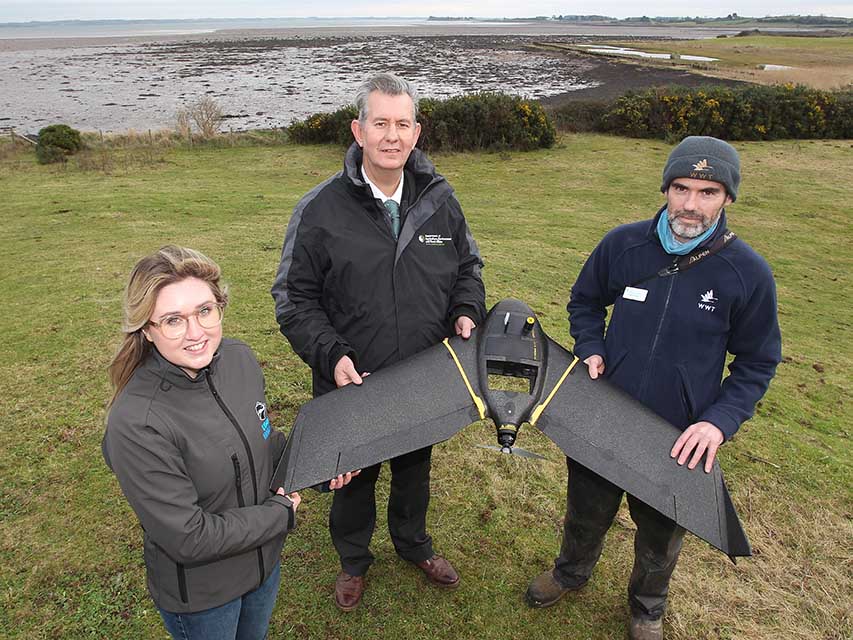Environment Minister visits blue carbon habitat at Castle Espie
Environment Minister Edwin Poots MLA has visited a saltmarsh blue carbon habitat at Castle Espie to hear about its vital contribution to climate change and protecting our natural world.
The main purpose of the visit was to highlight ongoing evidence gathering and efforts to protect and enhance high nature value blue carbon habitats by DAERA and its partners, culminating in the production of a Blue Carbon Action Plan for Northern Ireland.
The Minister, Edwin Poots said: “Blue carbon habitats are a powerful and significant natural resource to help us fight against climate change. Blue carbon habitats support wider biodiversity, protect against coastal erosion and flooding, are nursery grounds for commercially important fish species, and have societal wellbeing benefits.
“It was great to see for myself how important saltmarsh blue carbon habitats are. On my visit I met with staff from Wildfowl and Wetlands Trust (WWT), who manage the site at Castle Espie, DAERA staff and partners from Ulster Wildlife.
“Over the last 12 years, under the careful and patient management of WWT staff, new saltmarsh habitat has been created at Castle Espie. This habitat plays a vital role in not just in carbon capture and storage, but also the wider nature and social benefits such as providing coastal defence, foraging and breeding grounds for wintering birds, and a key tourist facility on a beautiful stretch of our coastline.”

Paul Stewart Director for WWT Castle Espie said: “We are delighted to welcome the Minster to view the conservation work carried out by the WWT at Castle Espie and the recognition of the benefit to both people and planet of wetland habitats.
“The wetland centre at Castle Espie provides the public with a window on Strangford Lough, one of Northern Ireland’s most beautiful natural assets, and with the worlds wetlands storing more carbon than the world’s forests combined that beauty is more than skin deep.
“We look forward to working in partnership with DAERA and our peer conservation charities on the Blue Carbon Action Plan for Northern Ireland and highlighting the important role habitats such as can be found at WWT Castle Espie play in carbon sequestration and addressing the biodiversity crisis”
Dr Annika Clements, Director of Nature, Climate and Environment, Ulster Wildlife said: “The role of woodlands and peatlands in carbon sequestration has been well known for some time, but marine equivalents have often been overlooked, despite the oceans absorbing nearly a third of CO2 emissions that human activity generates each year.
“Ulster Wildlife’s blue carbon projects are the first step in Northern Ireland recognising the potential of coastal blue carbon habitats such as saltmarsh, seagrass and shellfish to lock away carbon, particularly within our Marine Protected Area network, but only when they are well managed and healthy.
“Integrating blue carbon protection and recovery into climate change mitigation and adaptation, as part of a wider approach to meet net zero targets is a win-win for tackling both the climate and biodiversity crises, helping to bring our precious seas back to life.”
The Minister added: “I am aware the evidence base for blue carbon habitats is ever increasing but that gaps still remain. It is important that policies and decisions are based on sound evidence and I am delighted that my Department has been able to fund key blue carbon research in Northern Ireland.
“My officials have also been working with other UK administrations and through the British-Irish Council, to share learning on blue carbon habitats, and this knowledge transfer is proving very beneficial.”

























